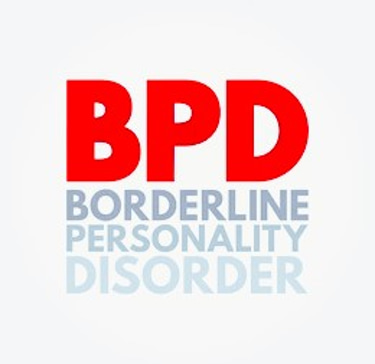

Borderline personality disorder and narcissistic personality disorder are distinct psychiatric conditions with their own diagnostic criteria. However, BPD and NPD, both Cluster B personality disorders, share several prominent characteristics. Understanding the similarities can assist us in better understanding the complexities of these two disorders.
1. Fear of Abandonment
One of the most striking similarities between BPD and NPD is fear of abandonment. For individuals with BPD, this fear manifests in frantic efforts to avoid real or perceived rejection. They cling to relationships, become overly dependent, or experience extreme emotional reactions to the slightest hint of distance.
For those with NPD, the fear of abandonment is often masked by a facade of confidence or indifference. However, beneath the surface, narcissists are deeply afraid of being left alone or replaced. This fear can cause manipulative behaviors, such as gaslighting or love bombing, to maintain control over relationships.
While the outward expressions of this fear differ, the underlying insecurity is a shared feature of both disorders.
2. Emotional Instability
Emotional instability is the hallmark symptom of BPD, but it’s also present in NPD, albeit in a slightly different form. People with BPD experience rapid mood swings, going from intense joy to deep despair in a matter of minutes. Their emotions can feel overwhelming and all-consuming.
Individuals with NPD may appear more emotionally controlled, but their stability is often a mask. Beneath the surface, they are often highly sensitive to criticism or perceived slights, reacting with anger, defensiveness, or even rage. This emotional volatility is often tied to their fragile self-esteem, which is easily threatened.
In both disorders, individuals struggle to regulate emotions, though the way this struggle manifests can look quite different.
3. Difficulty with Empathy
There are two types of empathy: emotional and cognitive. Emotional empathy is the ability to feel another's emotions as if they were our own. Cognitive empathy is an intellectual process. Cognitive empathy allows us to understand another's emotions without actually feeling them. Individuals with BPD are often high in emotional empathy, while those with NPD are lacking emotional empathy.
People with BPD are highly empathetic, often to the point of absorbing others’ emotions as their own. However, in moments of extreme stress or emotional pain, they may struggle to consider others’ perspectives, leading to impulsive or self-centered behaviors.
In contrast, individuals with NPD are characterized by an extreme lack of empathy. They have difficulty understanding or caring about others’ feelings, especially if those feelings don’t align with their own needs or desires. This lack of empathy can make relationships with narcissists feel one-sided or exploitative.
While the empathy challenges in BPD are often situational, and in NPD they’re more pervasive, both disorders can lead to difficulties in forming healthy, reciprocal relationships.
4. Unstable Self-Image
An unstable sense of self is a core feature of BPD. People with this disorder struggle to maintain a consistent identity, swinging between extremes in how they see themselves.
For those with NPD, self-image issues are more complicated. On the surface, narcissists appear highly confident or even grandiose. However, this confidence is usually a defense mechanism that masks deep insecurities. Their self-worth is often tied to external validation, such as praise, admiration, or success. Without it, they may feel empty or inadequate.
In both cases, the struggle with self-image reflects an internal fragility that can be difficult to navigate.
5. Manipulative Behaviors
Manipulation is a controversial topic when it comes to BPD and NPD. People with BPD may engage in manipulative behaviors such as guilt-tripping or threats of self-harm as a way to cope with their fear of abandonment or emotional pain. These actions are often driven by desperation rather than malice.
With NPD, the manipulation is more calculated. Narcissists may use charm, flattery, or deceit to get what they want, whether it’s attention, admiration, or control. Their manipulative behaviors are typically rooted in a desire to maintain their self-esteem or dominance in relationships.
While the motivations for manipulation differ, both disorders can involve patterns of manipulation that strain relationships and create conflict.
NPD and BPD are distinct Cluster B personality disorders with unique diagnostic criteria. However, individuals with both disorders struggle with abandonment fears, unstable self-image, emotional instability, and empathy problems, and tend to use manipulation, albeit with different motivations.
It’s important to remember that people with BPD or NPD are not defined by their disorders. With the right support, therapy, and self-awareness, individuals with these conditions can learn to manage their symptoms and build healthier, more fulfilling lives.
